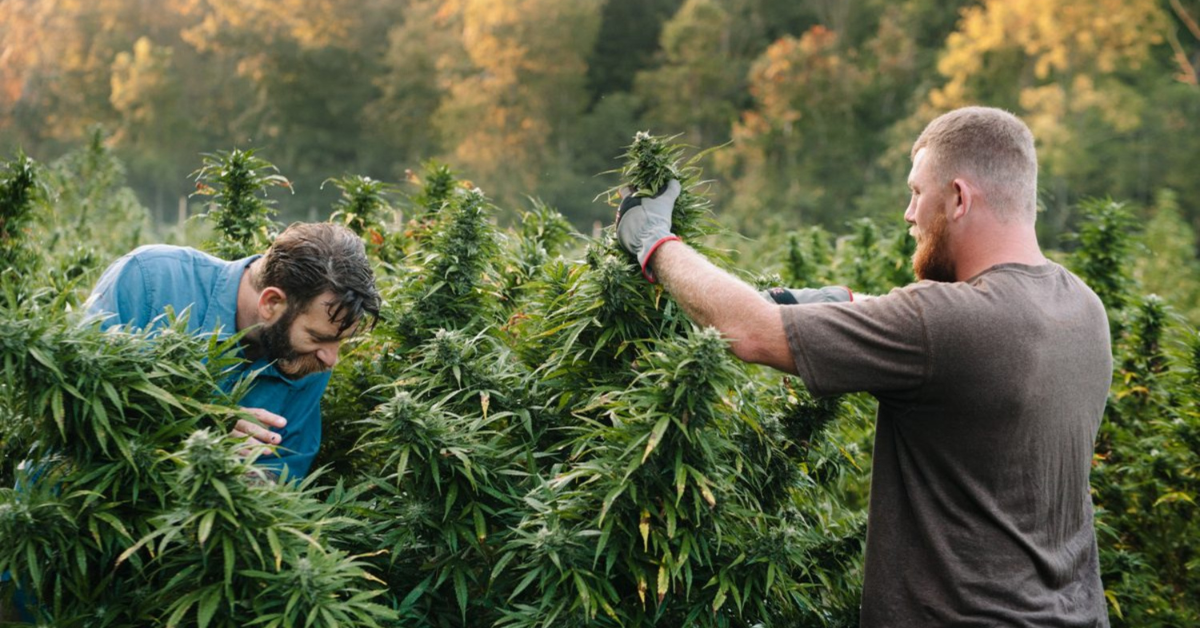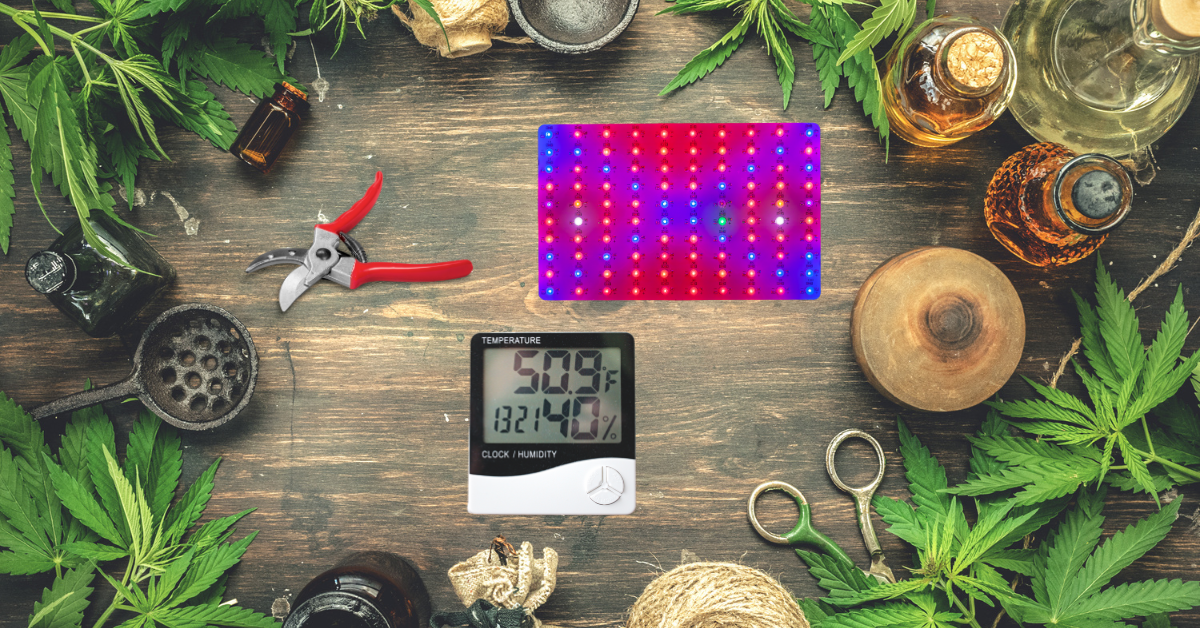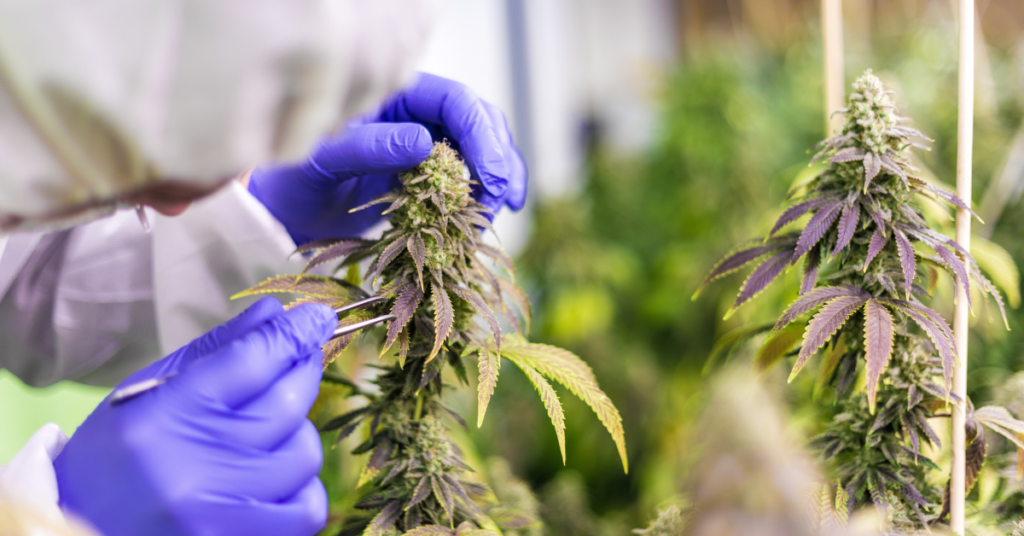Cannabis plants have become famous for growing in recent years, as they have many uses.
The growing demand for cannabis has led growers to search for methods to maximize their yields. Pruning and training cannabis are two techniques that many growers use to increase their yields and improve the overall quality of the plants.
We will discuss the different pruning and training techniques that can be used to maximize cannabis yields.
Table of Contents
Introduction to Pruning and Training Cannabis Plants

Pruning and training marijuana are two techniques used to shape and control the growth of cannabis plants.
Pruning refers to the process of removing leaves and branches from the cannabis plant to control the size, shape, and overall yield of the plant.
Training is manipulating the plant’s shape to increase the number of buds produced. Both pruning and training techniques can be used to maximize the yields of cannabis plants.
Pruning and training cannabis plants should be done early in the growing cycle. This will ensure the plant has time to recover from the pruning or training before the flowering phase.
It is important to note that pruning and training techniques should not be done during the flowering phase, as this can reduce yields and cause damage to the plant.
Benefits of Pruning and Training Cannabis Plants
Pruning and training cannabis can help to increase yields by providing the plant with more light and air circulation.
Pruning and training marijuana can also help reduce the plant’s size, making it easier to manage. In addition, pruning and training cannabis can help to improve the overall quality of the cannabis buds.
Pruning and training cannabis can also help reduce the amount of nutrients needed to grow the cannabis plant.
Removing leaves and branches can help reduce the amount of nutrients needed to sustain the plant. This can help to reduce the overall cost of growing the cannabis plant.
Pruning Techniques for Maximum Yields
Pruning involves removing leaves and branches from the cannabis plant to control the plant’s size, shape, and overall yield. There are a few different pruning techniques that can be used to maximize yields.
Topping. Topping involves removing the top of the plant to encourage the plant to grow outwards instead of upwards.
This technique can increase the number of buds produced, as more light and air can reach the lower parts of the plant.
FIMing. FIMing involves removing the top of the plant and then removing the leaves and branches from the sides of the plant. It increases the number of buds produced as more light and air can reach the lower parts of the plant.
Defoliation. Defoliation involves removing the leaves from the lower parts of the plant to reduce its size and increase the amount of light and air that can reach the buds.
This technique can be used to increase the number of buds produced.
Different Training Techniques for Maximum Yields
Training is a technique that can be used to manipulate the shape of the cannabis plant to increase the number of buds produced.
A few different training techniques can be used to maximize yields.
Low-stress training. Low-stress training involves gently bending the branches of the cannabis plant to redirect the light and air to the lower parts of the plant.
This cannabis training technique can be used to increase the number of buds that are produced.
High-stress training. High-stress training involves bending the branches of the cannabis plant to stress the plant and redirect the light and air to the lower parts of the plant to increase the number of buds produced.
Super cropping. Super cropping involves gently pinching the branches of the cannabis plant to stress the plant and redirect the light and air to the lower parts of the plant to increase the number of buds produced.
Tips for Pruning and Training Cannabis Plants
Prune and train your cannabis plants early in the growing cycle. Pruning and training should not be done during the flowering phase, as this can reduce yields and cause damage to the plant.
Use sharp pruning shears to avoid damaging the plant.
Take your time when pruning and training cannabis plants. It can take several weeks for the plant to recover from pruning and training, so be patient.
Use pruning and training techniques best suited for your cannabis strain. Different strains require different methods to maximize yields.
Take regular breaks when pruning and training your cannabis plants. This will help reduce fatigue and ensure you are not overworking the plants.
Tools and Materials Needed for Pruning and Training Cannabis Plants

Pruning shears: Pruning shears remove leaves and branches from cannabis plants.
Plant ties: Plant ties are used to tie branches of the cannabis plant to support structures.
Grow lights: Grow lights provide light to cannabis plants to promote growth.
Humidity and temperature monitor: A humidity and temperature monitor is used to measure the temperature and humidity levels of the growing environment.
Nutrients: Nutrients provide cannabis plants with the necessary nutrients for growth.
What to Look Out for When Pruning and Training Cannabis Plants
Pruning and training cannabis plants can be a tricky process. It is essential to look for signs indicating the plants are not doing well.
Yellowing or wilting leaves: Yellowing or wilting leaves can indicate that the plants are not getting enough light, water, or nutrients.
Stunted growth: Stunted growth can indicate that the plants are not getting enough light, water, or nutrients.
Excessive flowering: Excessive flowering can indicate that the plants are getting too much light or nutrients.
Mold or mildew: Mold or mildew can indicate the environment is too humid or wet.
Pest infestations: Pest infestations can indicate that the environment is unsuitable for growing cannabis plants.
If you notice any of these signs, it is essential to take corrective action immediately to ensure the health of the plants.
Common Mistakes to Avoid When Pruning and Training Cannabis Plants
Pruning or training too much: Pruning or training too much can cause damage to plants and reduce yields.
Pruning or training at the wrong time: Pruning or training during the flowering phase can reduce yields and cause damage to the plants.
Not using the right tools or materials: Not using the right tools or materials can cause damage to plants and reduce yields.
Not taking regular breaks: Not taking frequent breaks can lead to fatigue and reduce yields.
Not monitoring the environment: Not monitoring the environment can lead to pest infestations and reduce yields.
Different Methods of Pruning and Training Cannabis Plants
SCROG: SCROG stands for Screen of Green. This method involves tying the branches of the cannabis plant to a screen or trellis to redirect the light and air to the lower parts of the plant.
SOG: SOG stands for Sea of Green. This method involves planting multiple cannabis plants close together to increase the number of buds produced.
LST: LST stands for Low-Stress Training. This method involves gently bending the branches of the cannabis plant to redirect the light and air to the lower parts of the plant.
HST: HST stands for High-Stress Training. This method involves bending the branches of the cannabis plant to stress the plant and redirect the light and air to the lower parts of the plant.
Conclusion on How to Maximize Yields Through Pruning and Training Cannabis
Pruning and training are two techniques used to shape and control the growth of cannabis plants.
Pruning and training marijuana can help to increase yields by providing the plant with more light and air circulation.
Pruning and training cannabis can also help reduce the plant’s size, making it easier to manage. In addition, pruning and training can help to improve the overall quality of the cannabis buds.
A few different pruning and training techniques can be used to maximize yields. Topping, FIMing, and defoliation are all pruning techniques that can be used to increase yields. Low-stress training, high-stress training, and super cropping are all techniques that can increase yields.
It is important to remember that pruning and training cannabis plants should be done early in the growing cycle.
This will ensure the plant has time to recover from the pruning or training before the flowering phase.
In addition, it is essential to use the right tools and materials, take regular breaks, and monitor the environment to ensure the plants’ health.
With the right tools, materials, and techniques, you can maximize your yields and improve the quality of your cannabis plants.
